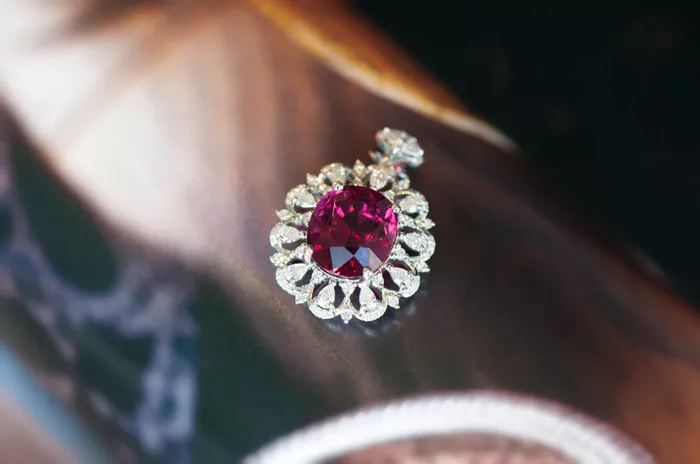Black Tourmaline, known for its protective and grounding properties, has gained significant popularity in recent years. However, with the rise in demand comes the proliferation of fake or treated stones in the market. As a buyer, it’s crucial to be able to distinguish between genuine Black Tourmaline and imitations to ensure you’re getting the real deal. In this article, we’ll delve into identification tips, tests for authenticity, understanding inclusions, luster and reflection, spiritual and healing properties, maintenance and care, value and rarity, and provide a purchasing guide to help you make informed decisions.
Identification Tips
When assessing the authenticity of Black Tourmaline, there are several key factors to consider:
Color: Genuine Black Tourmaline typically exhibits a deep black color. While some natural variations may include hints of brown or gray, be cautious of stones that are overly shiny or have unnatural color variations.
Shape: Black Tourmaline crystals often form in long, columnar shapes with striations along their length. Be wary of stones that are too perfectly shaped or lack natural irregularities.
Texture: Authentic Black Tourmaline has a rough, slightly gritty texture due to its crystal structure. Avoid stones that feel excessively smooth or have a plastic-like texture.
Tests for Authenticity
Several simple tests can help verify the authenticity of Black Tourmaline:
Magnet Test: Black Tourmaline is not magnetic, so if a magnet is attracted to the stone, it may indicate a fake or mixed-material piece.
Scratch Test: Black Tourmaline has a Mohs hardness of 7 to 7.5, which means it can scratch glass but is scratched by harder materials like quartz or topaz. Use a quartz or topaz crystal to gently scratch the surface of the stone. If it leaves a mark, it might not be genuine Black Tourmaline.
Pleochromism Check: Hold the stone up to a light source and rotate it. Genuine Black Tourmaline may exhibit pleochroism, meaning it shows different colors from different angles due to its crystal structure. However, this is not a definitive test as not all Black Tourmaline displays pleochroism.
Understanding Inclusions
Inclusions are natural features or substances trapped inside a gemstone during its formation. In Black Tourmaline, common inclusions include tiny crystals, mineral inclusions, or even gas bubbles. While inclusions may affect clarity, they can also serve as indicators of a natural stone. Inspect your Black Tourmaline for these imperfections, as they are often absent in synthetic or treated stones.
Luster and Reflection
Genuine Black Tourmaline typically exhibits a vitreous to resinous luster, meaning it should appear shiny but not overly glassy. When held under light, it may reflect light in a subtle, subdued manner due to its opaque nature. Be cautious of stones that have an exceptionally high shine or reflect light in an unnatural way, as these characteristics may indicate a synthetic or treated stone.
Spiritual and Healing Properties
Many individuals are drawn to Black Tourmaline for its purported spiritual and healing properties, such as protection from negative energy and grounding qualities. However, it’s essential to note that the metaphysical properties associated with Black Tourmaline are believed to be inherent to the genuine stone’s structure and composition. Fake or synthetic crystals are generally not thought to possess the same energetic qualities.
Maintenance and Care
To maintain the quality and energy of your Black Tourmaline, follow these care tips:
Cleaning: Gently clean your Black Tourmaline with mild soap and water using a soft brush or cloth. Avoid harsh chemicals or ultrasonic cleaners, as they can damage the stone.
Storage: Store your Black Tourmaline away from direct sunlight and other gemstones to prevent scratches or color changes. Consider wrapping it in a soft cloth or storing it in a jewelry box.
Energetic Cleansing: Some believe that Black Tourmaline absorbs negative energy, so it’s beneficial to periodically cleanse it. Methods such as smudging with sage or placing it in moonlight are commonly recommended.
Value and Rarity
The value of Black Tourmaline is influenced by factors such as color, clarity, size, and whether it’s a natural or treated stone. Natural, untreated Black Tourmaline with excellent color and clarity commands higher prices due to its rarity and authenticity. Be wary of overly cheap Black Tourmaline, as it may indicate a lower-quality or synthetic stone.
Purchasing Guide
When purchasing Black Tourmaline, consider the following tips:
Reputable Sellers: Buy from reputable sellers who specialize in gemstones and crystals. Look for certifications or guarantees of authenticity.
Physical Examination: Whenever possible, physically examine the stone or request detailed photos. Pay attention to color, texture, inclusions, and overall appearance.
Ask Questions: Don’t hesitate to ask the seller about the stone’s origin, treatment (if any), and authenticity. A trustworthy seller will provide transparent information.
In conclusion, identifying genuine Black Tourmaline involves a combination of visual examination, simple tests, and understanding its natural characteristics. By applying these tips and guidelines, you can confidently assess the authenticity of Black Tourmaline and make informed purchasing decisions. Remember to care for your Black Tourmaline properly to preserve its quality and enjoy its spiritual and aesthetic benefits for years to come.


